This website uses cookies
This website uses cookies to enable it to function properly and to analyse how the website is used. Please click 'Close' to accept and continue using the website.


September 2024 - Ecokathedraal, Netherlands
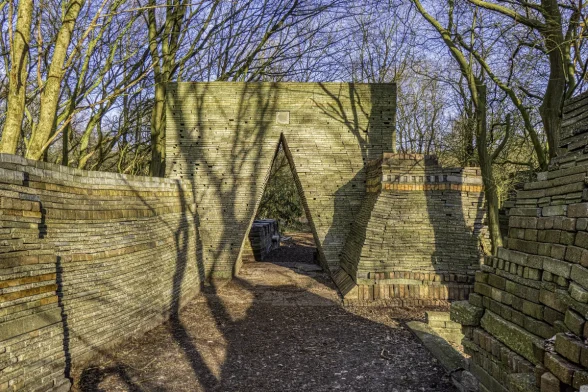
Image courtesy of Piebe van den Berg
Ecokathedraal, Mildam, Netherlands
Louis Le Roy, 1966 – present
In the late 1960s, the Dutch teacher and environmentalist Louis Le Roy wrote that the contemporary architects and planners of the Netherlands lacked ‘vision’ and had ‘lost touch with the people for whom they planned, and the land they managed.’ Immediately this is a surprising statement. Postwar Dutch ‘garden cities’ are famed for their extensive greenery, ample light and social facilities encompassing excellent modernist buildings. For Le Roy, it was not so much the final product of building that was his chosen target as the design process itself. In his view, architecture had become so thoroughly dependent on drawings by qualified professionals (with accordingly tight specifications written for anonymous contractors), that it had lost its connection to the citizens it was building for.
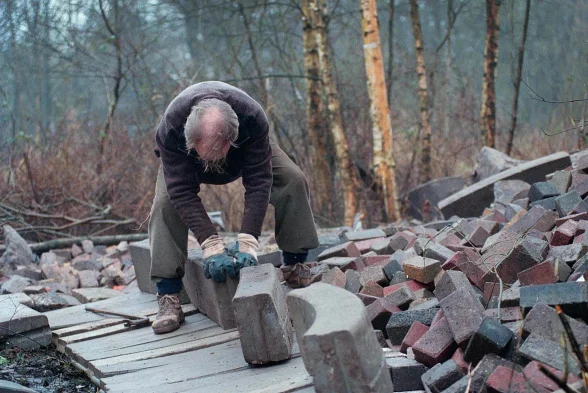
Image courtesy of Peter Wouda
Le Roy began his career as a teacher, and was drawn into architecture, and especially landscape architecture, by advising on a programme of tree planting at his school by students in 1971. By 1973 he was commissioned to guide the development of the landscape at Lewenborg, a housing estate in Groningen in the Netherlands, over a ten year period. Rejecting the traditional way of designing landscapes – by drawing them out, having the plans approved and then carried out by contractors, and then leaving the land to the care of the parks department – Le Roy envisioned the landscape as being laid out by the estate’s residents in an ongoing endeavour. This would let people reconnect to nature and encourage a nurturing relationship with it. At Lewenborg, Le Roy suggested recycling demolition materials as an environmentally friendly way to foster a range of ecological habitats. Volunteers took this advice but otherwise made their own decisions as to what to do.
The novel approach employed at Lewenborg brought Le Roy some temporary fame in Europe and he was commissioned for several similar landscaping projects elsewhere, including in Germany, Switzerland and France. The main interest among the Dutch mainstream press was in Le Roy’s ‘wild gardens’ project at the former Floriade site (the location of a former garden festival) in Amsterdam in 1973. This project borrowed elements incorporated into his project at Lewenborg, though to Le Roy’s annoyance without taking the underlying philosophy in considering the work as part of a continuous process.
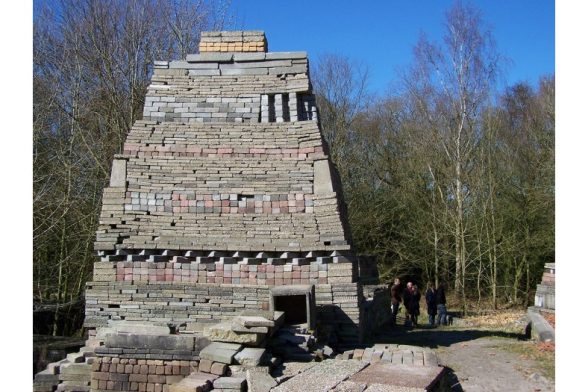
Image courtesy of Frits Mostert
By 1971, Le Roy was beginning to integrate his practical experience into a body of writing. In that year he contributed a series of articles for Plan, a Dutch design journal representing architects, landscape architects, engineers and planners. Le Roy’s articles were near-satirical exposés of bureaucracy and statism, exposing and ridiculing what he perceived as arbitrary decision-making by various public bodies. Styling himself as a contemporary Till Eulenspiegel, the German folk hero who poked fun at unreasonable officialdom, he intended to convince readers that they themselves were capable of better governance with respect to land development than the longstanding institutions. The writings reflect Le Roy’s increasing conviction that ordinary citizens could be responsible for their own environment.
1973 saw Le Roy publish his first full book, Natuur uitschakelen natuur inschkalen (Switch on nature, switch off nature), which relied less on an anti-establishment critique than a theory of how nature exists in developed Western societies. The book goes at lengths to point out most of the European countryside is an industrialised monoculture inhibiting decent habitats for wild flora and fauna. In contrast, Le Roy posits the city as a potential oasis for wildlife as well as its human citizens, with green spaces and allotments organised on an ad hoc basis that are allowed to grow wild and encourage various ecosystems. At the foundation of Le Roy’s thesis is that human beings are as much a product of nature as they are culture.
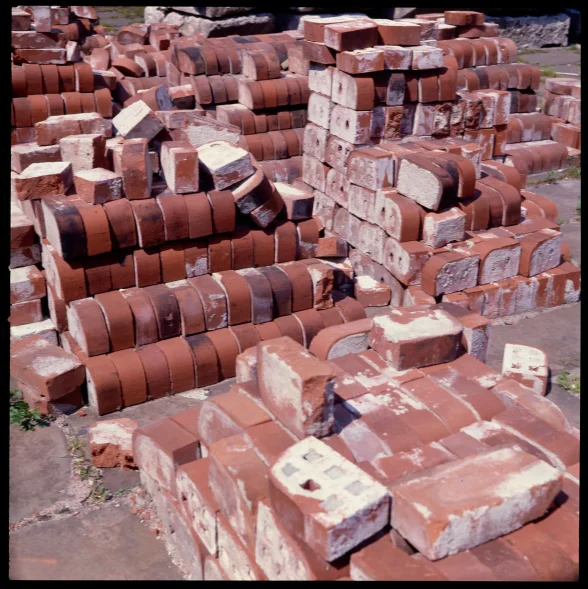
The Ecokathedraal (eco-cathedral) project was the apotheosis of Le Roy’s built work, expressing his anti-statist leanings as well as his theory of nature. In 1966 Le Roy had bought a plot of land at Mildam, outside the village of Heerenveen in the Netherlands, where he shortly after built a studio and dumped a large amount of rubble from a demolished prison across the grounds. From the late 1970s, the site fortuitously developed into the Ecokathdraal. Le Roy devised the concept of a large, continuously developing piece of landscape architecture spanning decades. Baked into the idea was the overriding conviction that contemporary building projects were short-termist, and that properly considered works would encompass several generations – hence the evocation of a cathedral, which in medieval times could take decades, even centuries, to complete.
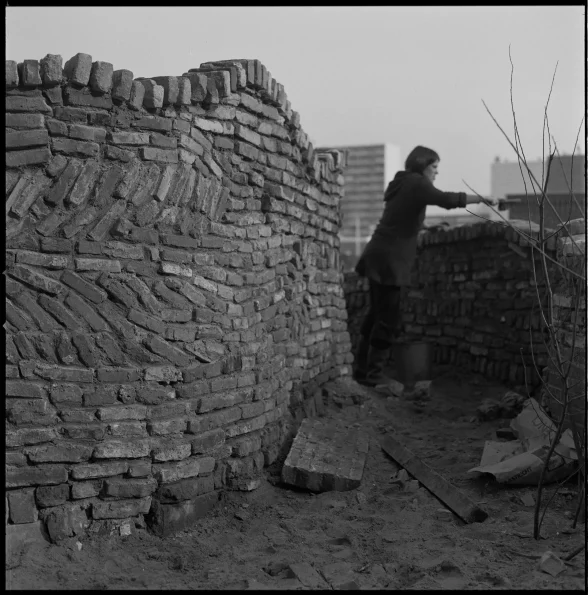
Le Roy started the project by stacking recycled paving material and building rubble, creating towers and structures of increasing complexity. They were arranged to assist in retaining and drawing up water, speeding up processes of decomposition with higher temperatures, and creating the diverse ecosystem which he had theorised about so extensively earlier in the decade. Very few drawings were produced for the project and where they existed they were to convey ideas very broadly, or to produce a record of the work. The project stopped and started across the decades and in the meantime the grounds grew tussocky and holly emerged as a major weed.
Between 1983 and 1999 Le Roy estimated that some 1,300 lorries with 15,000 tons of waste from street refurbishments in and around Heerenveen had been deposited on site, instead of being disposed of in landfills. Kerb stones, brick setts, concrete slabs, drainage materials, sewage pipes, manholes were variably used, with sand, soil and weeds all mixed in. Le Roy made much of the interconnecting layers of materials as metaphors for the ecological and cultural exchange on the site. Le Roy died in 2012, after having set up the Stichting Tijf (Foundation Time) in 2002 with his partner and associates, to guarantee the continuation of the Ecokathedraal into the future. The project continues today.
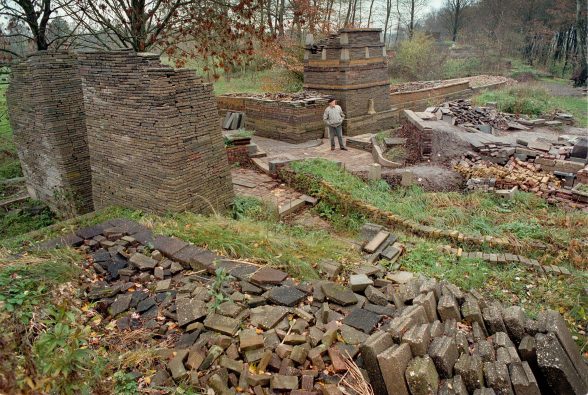
Le Roy’s systematised critique of architecture and environment was an implicit exhortation to citizens to restore their own autonomy to the development of land. He is part of the emergent countercultural architectural movement in the late 1960s – the high point of modernism – seeking to encourage participation in architecture by its users, as well as simultaneously breaking down the perceived top-down binary which distinguished the man-made world from the natural one. Other architects and educators from across the continent who echoed similar themes included Friedensreich Hundertwasser in Austria, and Lucien Kroll in Belgium. Coming to describe himself as an ‘ecotect’, the Ecokathedraal represented the maturation of his theories, and the project directly channels ideas from the late 1960s into the present day.
Building of the Month is edited by Joe Mathieson; an Architectural Adviser at the Hampstead Garden Suburb Trust, writer and C20 volunteer.
For pitches, or to discuss ideas for entries, please contact: joe@c20society.org.uk
Look for past Buildings of the Month by entering the name of an individual building or architect or browsing the drop down list.

Become a C20 member today and help save our modern design heritage.